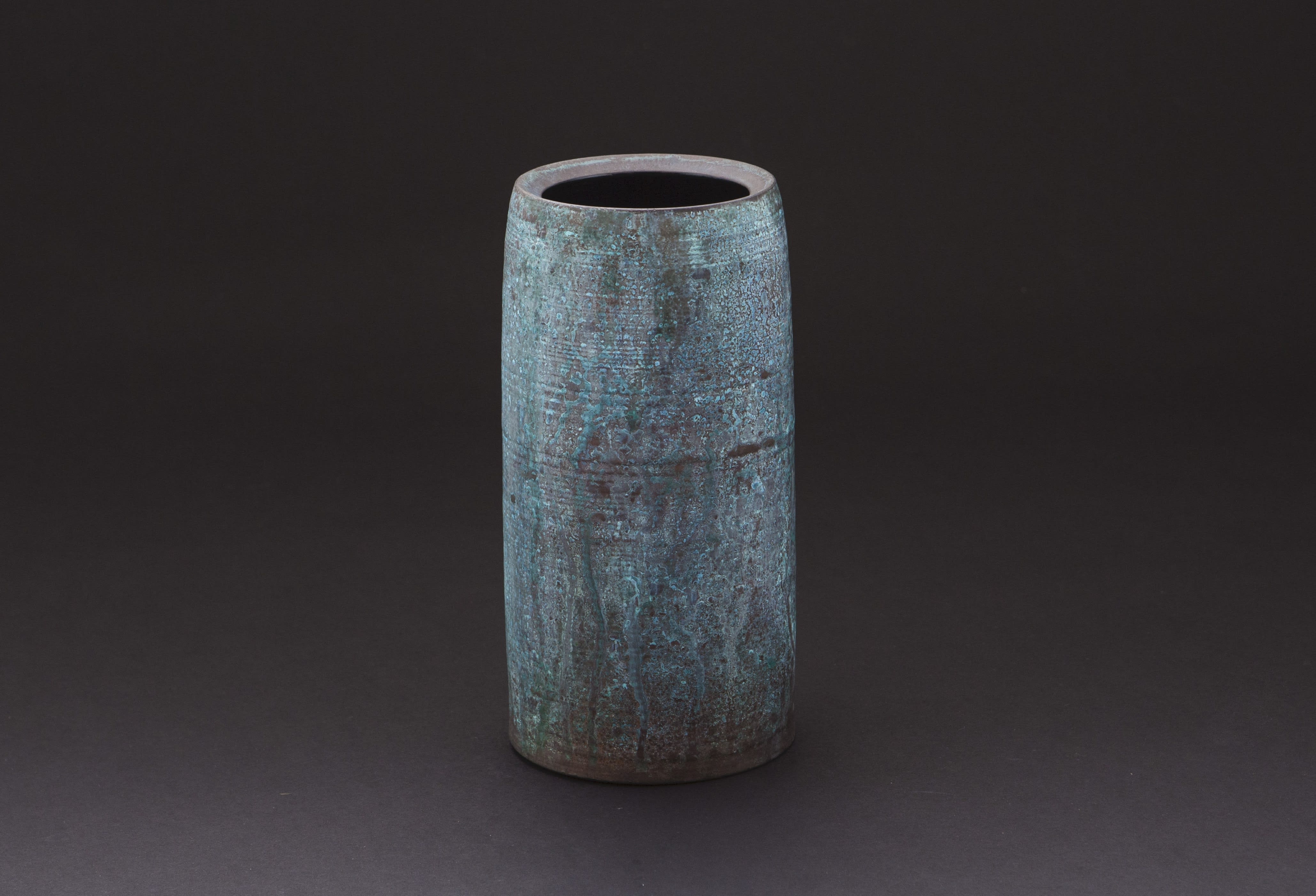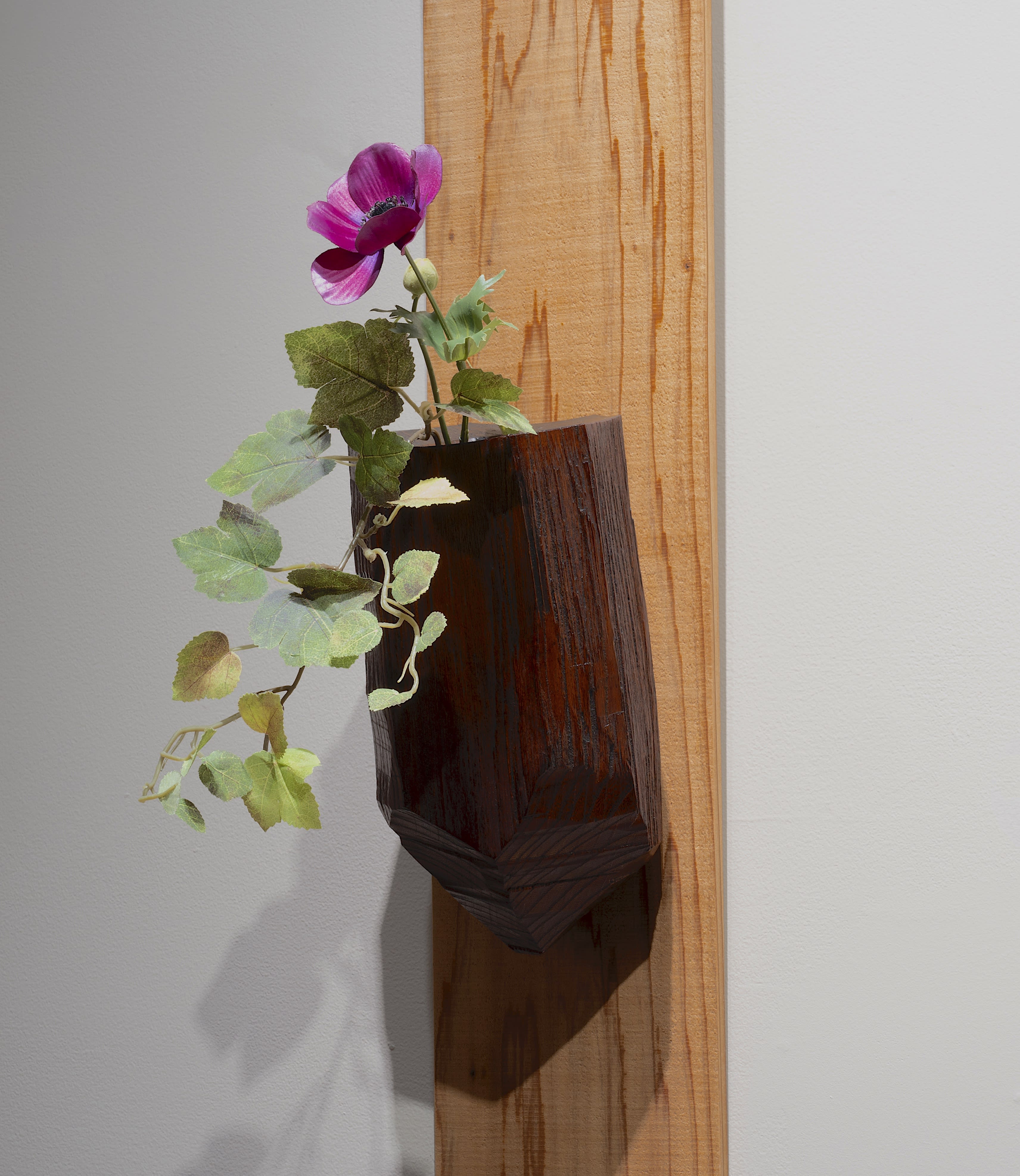
Jihei Murase, Copper Flower Vase, Lacquer, 2022 (C25050) (C25051)
As the son and grandson of tea practitioners, Jihei Murase has long been immersed in the chado ceremony. As a craftsman, Murase creates wooden objects that are functionally intended as tools to facilitate tea services, and the artist often utilizes his own pieces when serving tea. Part of the method of arranging flowers (chabana 茶花), the combined aesthetic of the vase and flower is hanaire 花入. How does a well chosen hanaire elevate the tea ceremony?

Jihei Murase, Silver Hatchet-Shaved Flower Vase, Lacquer, 2022 (C25069)

Jihei Murase, Silver Hatchet-Shaved Mounted Flower Vase, Lacquer, 2022 (C25070)
The proliferator of the Japanese tea ceremony, Sen no Rikyu once advised that the flowers should appear in the chashitsu (tea room) as they appear in the wild. As such, flowers are chosen based on the seasons, so as to reflect the reality of the world outside of the service. Like the cycle of the seasons, the nutritious water and vital flowers must be changed regularly, never a permanant fixture.
As a decoration, the flower vase—along with the chawan (tea bowl), mizusashi (water jar), chashaku (tea scoop), tea kettle, and chairei or nakatsugi (tea caddies)—is only one part of the aesthetic whole. All of these objects are made from ceramic or porcelain, lacquered wood, or bamboo, which contribute in different ways to the overarching atmosphere of the ceremony.

Jihei Murase, Hatchet-Shaved Silver Flower Vase, Lacquer, 2022 (C25052)

Jihei Murase, Hatchet-Shaved Silver Flower Vase, Lacquer, 2022 (C25021)

 Jihei Murase, Collection of Heishi
Jihei Murase, Collection of Heishi

Jihei Murase, Negoro Bottlenecked Vase - Small, Lacquer, 2022 (C25043)
Distinctly different from the vermillion heishi in both color and form, the copper-dusted vase is a simple cylindrical form with a wide mouth, meaning this vase is fit for an entirely different sort of flower. Feigning a metal finish owing to an oxidized copper powder, the impression of the vase betrays its light weight and zelkova elm base.

Jihei Murase, Copper Flower Vase, Lacquer, 2022 (C25050)
Murase’s final vases are of a shared technique, only divided by their orientation as well-hung versus standing. Coated with a black urushi lacquer and silver powder, Murase ensures the preservation of the surface by oxidizing each piece in sulfur three times. The rough hewn charm is created through the combined efforts of Murase’s technically challenging hatchet-shaving technique and the intentional preservation of the beautiful zelkova elm grain.

Jihei Murase, Hatchet-Shaved Silver Flower Vase, 2022 (C25055)

Jihei Murase, Hatchet Shaved Mounted Flower Vase, Lacquer, 2022 (C25072)
Sources: